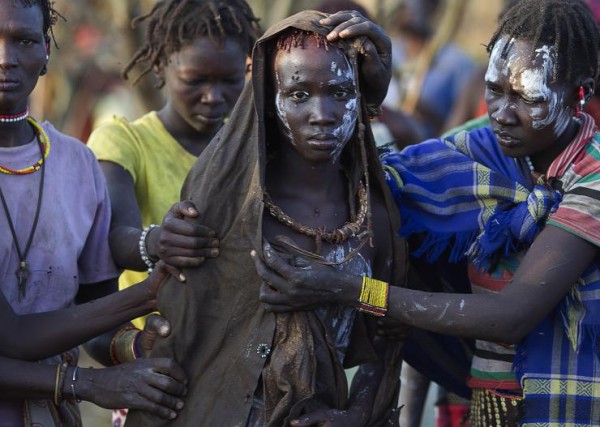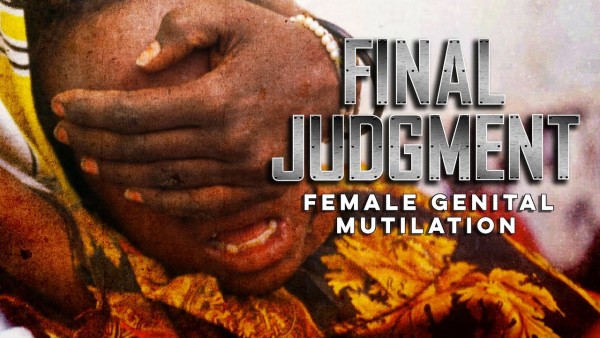
It is now a crime in Nigeria to mutilate the genitals of women and girls. Female Genital Mutilation (FGM) is one of the highly contested cultural issues between the secular world and conservative traditional societies.
The practitioners argue that genital mutilation suppresses the sexual desires of women, keeping them faithful to their husbands. The practice, to say the least, is inhuman looking at it from the angle of how it is carried out.
In Nigeria and many African nations, the practice is widespread. According to statistics in Nigeria, a staggering 19.9 million Nigerian women are said to have undergone FGM. It is also said FGM has prevalence rates as high as over 95 percent in countries like Somalia, Guinea, Djibouti and Egypt. In Nigeria, which has a population of 175 million, the national prevalence rate is estimated to be around 27 percent. Many human rights activists and non-government organizations have been on the front line, to press for the passage of the Violence Against Persons (VAP) Bill, which has resulted in this success story for women.
In total, according to statistics from the World Health Organization (WHO), more than 125 million girls and women alive today have had their genitals mutilated in some 29 African and Middle Eastern countries where FGM takes place.
President Goodluck Jonathan, after losing the General Elections to his opponent, Muhammadu Buhari, left the Presidential palace with his head high by signing the VAP bill into law last month.
The new law, apart from banning FGM, also bans men from leaving their families without providing them with financial support. Activists say it is a double victory for women in Africa’s most populous nation.
But social commentators have cautioned that the mere passage of the bill into law does not call for celebration but rather opens a new challenge, because FGM is so embedded within many cultures in the country that the attitudes around it need to be changed first.
Even the WHO has made similar remarks in the past by saying, “It may be difficult for families to abandon the practice without support from the wider community. In fact, it is often practiced even when it is known to inflict harm upon girls because the perceived social benefits of the practice are deemed higher than its disadvantages.”
“There’s a price to be paid by bucking norms that are widely observed. It took a lame duck president and lame duck legislators who don’t have to face voters to undertake something that goes that much against the cultural norms or practices. It sends a powerful signal not only within Nigeria but across Africa. Nigeria, just because of the sheer size of its population, has one of the highest absolute number of cases of FGM in the world,” Peter Pham, the director of the Africa Center at the Atlantic Council, also said.
Since the ban was announced in Nigeria, community aid organizations and activists have said they are ready to take the burden of educating citizens on the criminality and how dangerous the practice is to women. There have been many recommendations for the former government for making such a giant strides to improve the lives of women in the country.
SOURCES:







It’s very sad how passionate people argue on this topic, despite how ignorant they are of the facts. There is also quite a bit of misleading propaganda out there on this topic. There are multiple forms of both male and female circumcision and each removes different parts of the genitals and different amounts. The most prevalent is not excision, the entire removal of the clitoris. Although some may practice female genital cutting as a form of religious expression, they are in the extreme minority. The vast majority of female genital cutting is performed as a cultural rite of passage. Male genital cutting is the same, some still practice it as a form of religious expression, but for most it is a cultural rite of passage. (I would state that the most common form of male genital cutting worldwide is the circumcision of the foreskin from the penis using the sharpened fingernail of a Rabbi). In some tribes boys will go off in groups into the wild as teenagers and return men. There is then a ceremony to welcome them back into society as adults. Female genital cutting serves as a similar role in many tribes. Girls go off together, WILLINGLY, and return as women and have ceremonies welcoming them back into society. The procedure is performed by a skilled elder, not some “savage with a rock” as many of you claim, just as women give birth in the united states with the aid of midwives. In some instances the procedure is even performed in hospitals. The issue we run into, is where this ancient and practiced cultural tradition clashes with the modernization and westernization of all areas of the world. Children in these indigenous societies are being introduced to alternate ways of living, whereas before they had only known the traditions of their family and tribe. Now some of them are not wanting to participate in this cultural institution. Some want to go off and lead different lives than their parents, the same as children in the united states. It is here where we see the real problem. Parent’s try desperately to cling to the traditions they were brought up with, while some children want to move to the city and gets jobs and buy ipods. This clash occurs in all aspects of indigenous native life, not merely female genital cutting. Parent’s want their children to learn to hunt and gather, and children want to go to the city and buy mcdonalds. You can not look through the lense of your own culture and force that on another completely different culture. Do not call them savages, do not sneer or mock them, do not insult the parents and claim you are better. You do not understand the way they feel or how they see the world, and you know nothing of the world they live in. Do not get me wrong, I do not support female genital cutting, but I do not support ignorant and inaccurate facts either. This practice will end, slowly and painfully as children continue to seek more modern lifetsyles and various cultural practices are abandoned and lost forever to history. It has already been happening without the government’s interference. Just in the last 7 years, from when I was a young anthropologist and an active researcher in the field, to now, the rates of female genital cutting have been cut in half and this had nothing to do with the american public’s righteous indignation. It was simply the normal side effect of the changing times. I do not deny that there are instances where the most severe forms of female genital cutting (the complete excision of the clitoris, removal of labia, and sewing shut of vagina) is forced on girls who do not want it. And where less severe forms (a small knick of the clitoris, not its entire removal) is forced on girls. There are also instances where girls who have not been educated and informed willingly choose female genital cutting because they have been brought up with it being an integral part of their culture. There are also instances where girls are educated and informed and still make the choice to do it because it is part of their culture. So stop with the judging, learn the facts, being a little more open minded and culturally sensitive, then join the debate. We are a bunch of outsiders, looking in, trying to tell other people how to live their lives. There is no right or wrong side here and both the argument for cultural preservation and freedom from tradition have their merits. Just think, educate yourself, and show a little sensitivity before you run your mouth on a topic you know very little to nothing about.
Also anonymous, I’m very disappointed by the propagandist nature of this article. The image speaks volumes. It’s trying to make it seem like a woman is holding a girl still against her will, while it is more likely it is a mother comforting her willing daughter and covering her eyes, much like when parent’s take their children to get shots, or adults get tattoos. The correct term for this practice is Female Genital Cutting. FGM is also a propagandist term, because it automatically forces readers to have very biased negative feelings towards the subject, without reading any further into it. Again, I do not support Female Genital Cutting, I’m just disappointed in how you handled the subject matter. You can’t bemoan mainstream media for their propaganda and then use the same techniques.
So what? They won’t enforce it, and on a global level, MGM is a far bigger problem. When are they going to ban MGM? That would really be something to cheer.